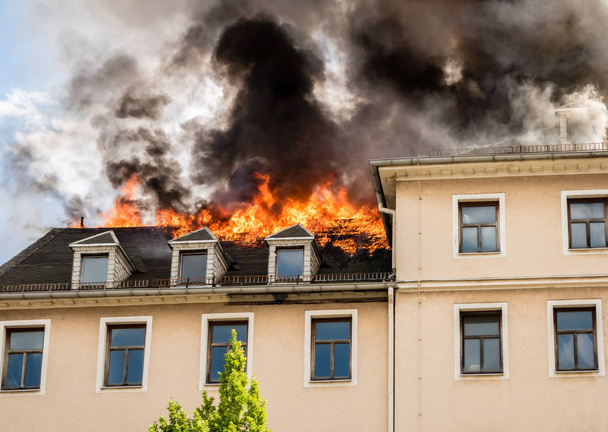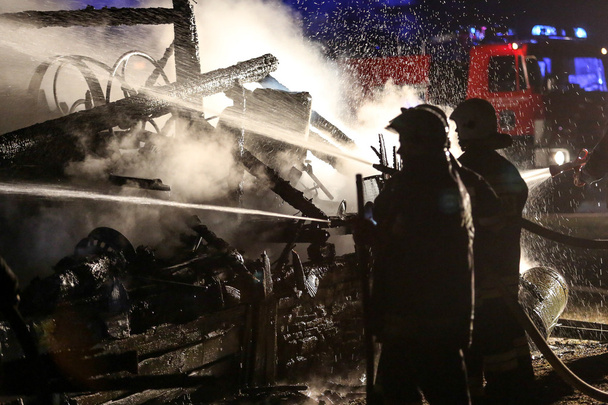A fire can be a devastating and life-altering event, leaving behind a trail of destruction in its wake. Beyond the physical damage caused by flames, smoke, and soot, fires often leave homeowners and communities emotionally scarred. In the aftermath of such a disaster, the process of fire restoration plays a crucial role in bringing hope and rebuilding lives.

This article delves into the world of fire restoration, exploring the challenges, techniques, and unwavering dedication of professionals in restoring properties and, more importantly, the sense of normalcy for those affected.
- The Aftermath of a Fire
When the flames have finally been extinguished, and the smoke has cleared, the true extent of the destruction becomes apparent. Homes are reduced to charred remains, cherished possessions are lost forever, and memories are turned to ashes. The emotional toll on the homeowners and occupants is immense, as they grapple with grief, shock, and uncertainty about the future.
- The Role of Fire Restoration Professionals
Fire restoration is a specialized field that requires a unique blend of expertise, compassion, and efficiency. Trained professionals are equipped to handle the entire restoration process, from initial assessment to the final touches of rebuilding. Their role encompasses damage assessment, debris removal, salvage operations, cleaning, and reconstruction.
- Damage Assessment
Before restoration can commence, a thorough assessment of the property is conducted. Professionals inspect the structural integrity, the extent of fire damage, and any potential hazards. This evaluation helps them formulate a comprehensive restoration plan tailored to each unique situation.
- Debris Removal
One of the first steps in the restoration process is the removal of debris and damaged materials. This step is essential to create a safe working environment for the restoration team and prepare the property for the subsequent stages of restoration.
- Salvage Operations
Not all possessions are lost beyond repair in a fire. Skilled restoration experts meticulously salvage and restore as many valuable and sentimental items as possible. From furniture to personal belongings, these salvaged items can hold immeasurable value to homeowners.
- Cleaning and Deodorization
The pervasive smoke and soot from a fire can leave lasting odors and stains on surfaces. Fire restoration professionals utilize specialized equipment and cleaning agents to remove these residues and eliminate unpleasant smells, ensuring the property becomes habitable again.
- Restoring Structures and Systems
The next crucial phase involves repairing and rebuilding the damaged structures, including walls, roofs, and floors. Additionally, electrical, plumbing, and HVAC systems may require extensive repairs or replacements to ensure they are safe and functional.
- Addressing Water Damage
In many cases, water used during firefighting efforts can compound the damage caused by the fire itself. Professionals must thoroughly dry and dehumidify the affected areas to prevent mold growth and further deterioration of materials.
- Rebuilding Lives
Fire restoration extends beyond the physical aspects of the property. It is about rebuilding lives and restoring a sense of normalcy for those who have suffered tremendous losses. Fire restoration professionals often work closely with homeowners to offer support, guidance, and reassurance during this challenging period.
- Challenges in Fire Restoration
Fire restoration is a complex and demanding process, fraught with various challenges. Some of the common obstacles faced by restoration teams include:
a. Safety Concerns: The safety of both the restoration team and the property’s occupants is of paramount importance. Working in environments that have undergone severe structural damage requires adherence to strict safety protocols.
b. Time Constraints: The longer the property remains in a damaged state, the higher the risk of secondary damage, such as mold growth. Fire restoration professionals must work efficiently to prevent further complications.
c. Emotional Impact: Dealing with homeowners who have suffered significant emotional trauma requires sensitivity and empathy. Understanding the psychological effects of the disaster can help restoration teams provide better support to those in distress.
d. Coordination and Communication: Effective communication and coordination among the restoration team members are crucial for a smooth and efficient restoration process. Collaboration with insurance companies and local authorities is also necessary to streamline the restoration efforts.

Fire restoration is not merely about rebuilding structures; it is about rebuilding lives and instilling hope in the face of adversity. The tireless efforts of skilled professionals, coupled with the resilience of homeowners, can turn devastation into renewal. Through damage assessment, debris removal, salvage operations, and comprehensive cleaning, the restoration process breathes new life into properties, fostering a renewed sense of comfort and safety. As communities come together to support those affected, the restoration journey becomes a testament to the indomitable human spirit.
Learn more at Wiki as well.

